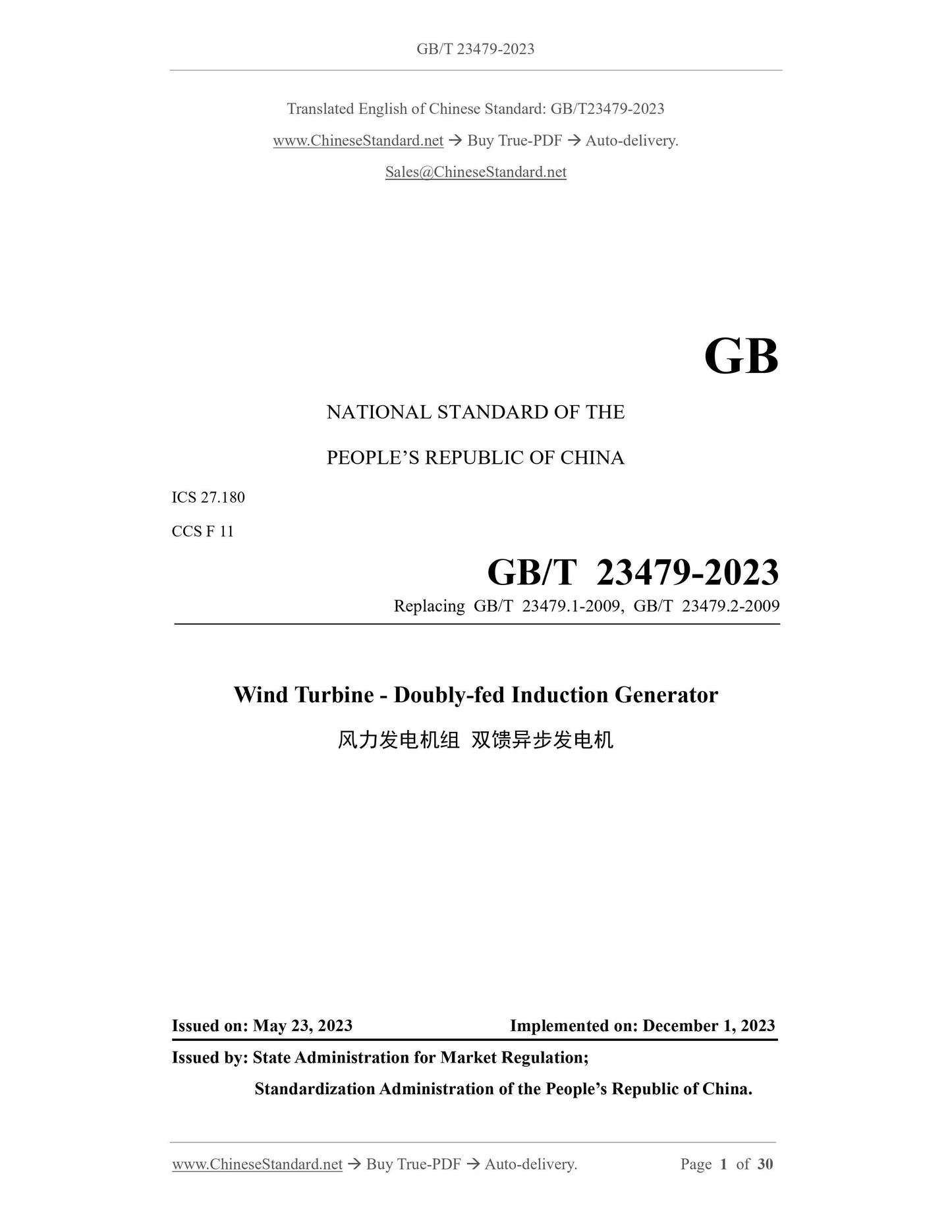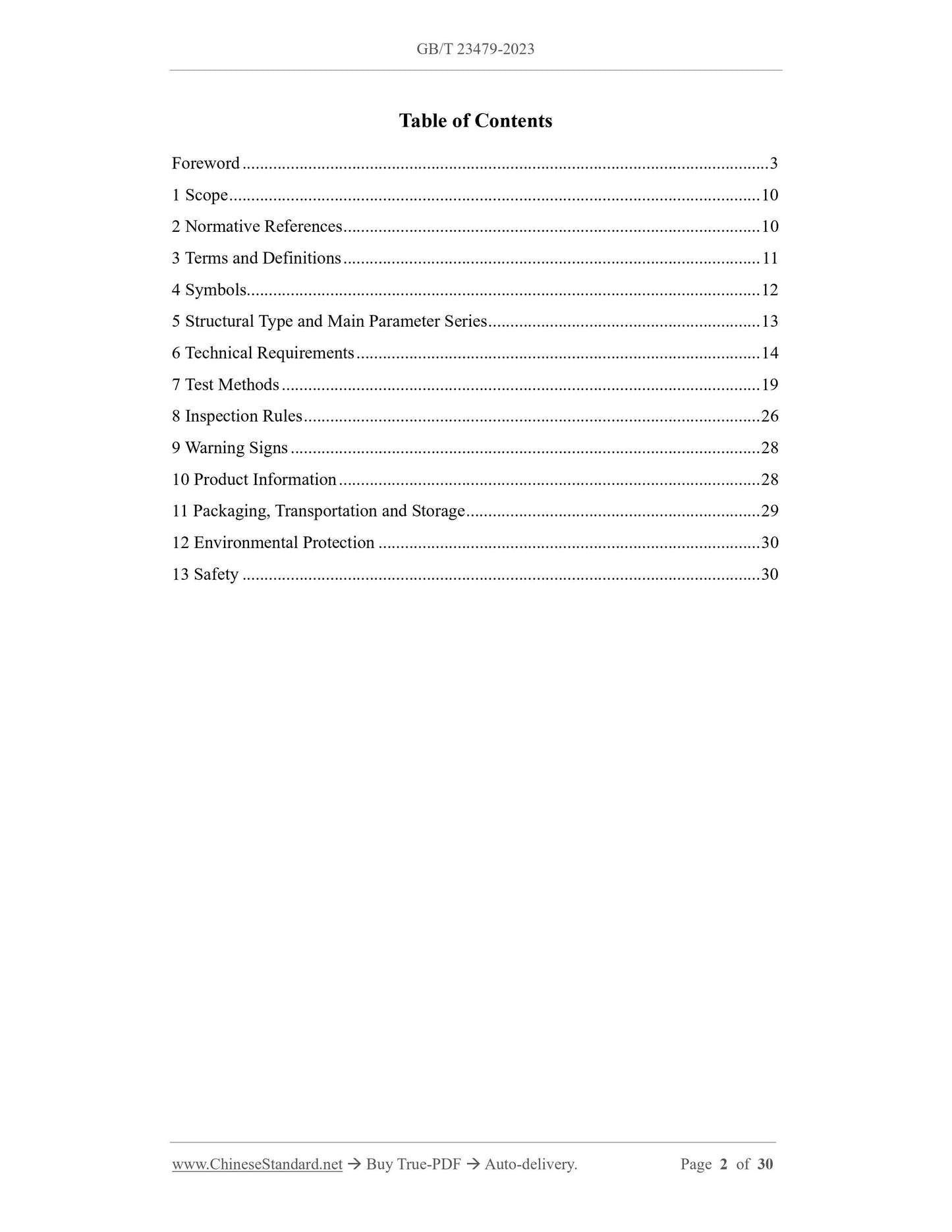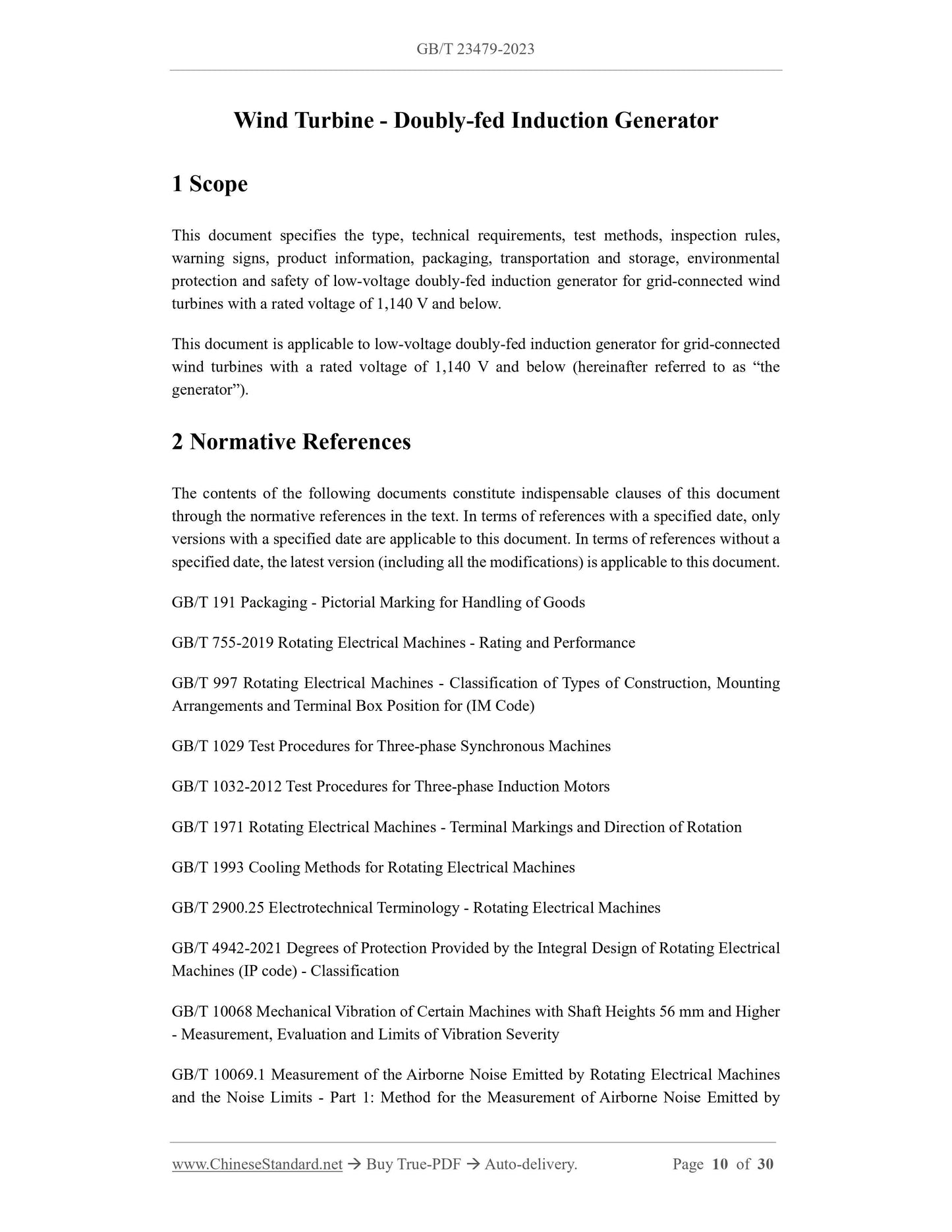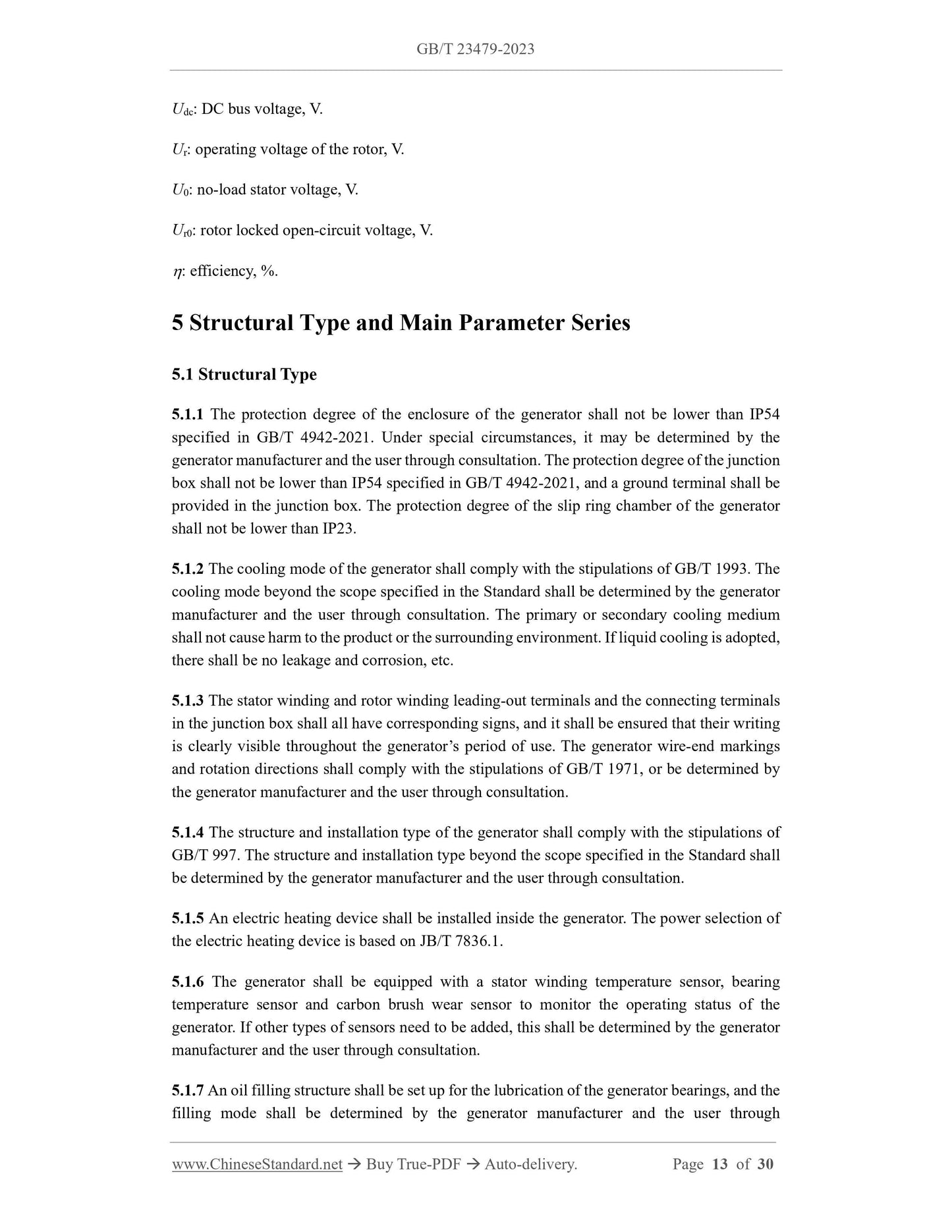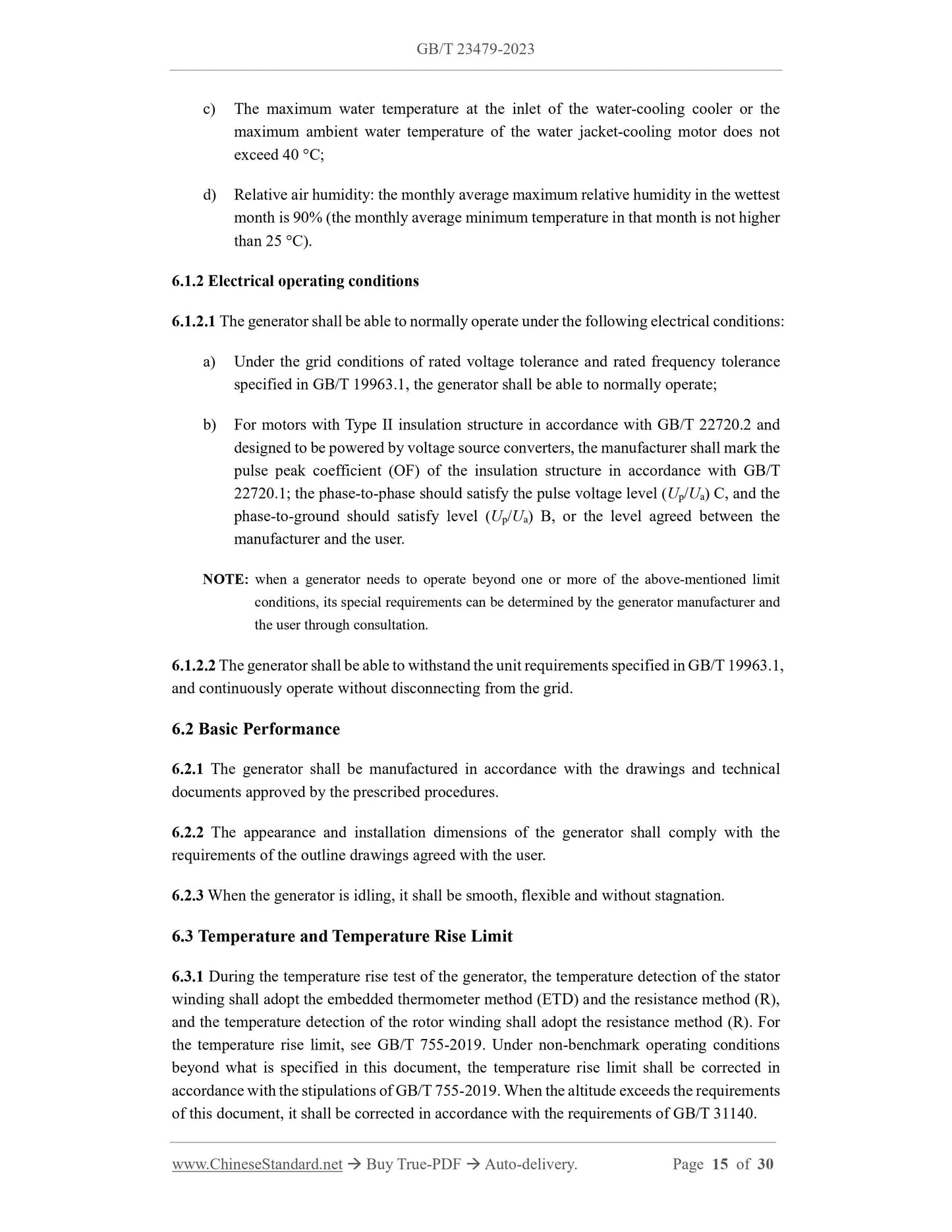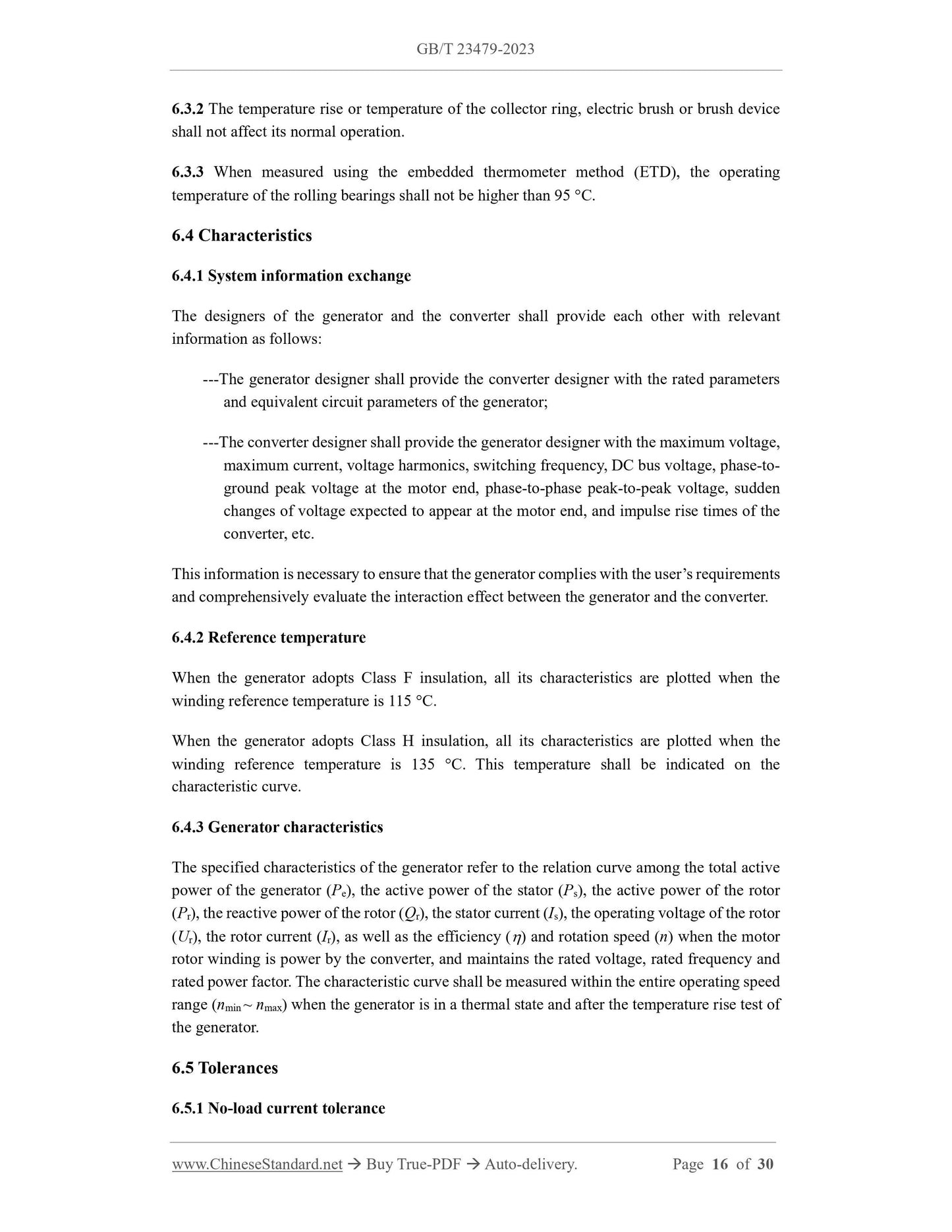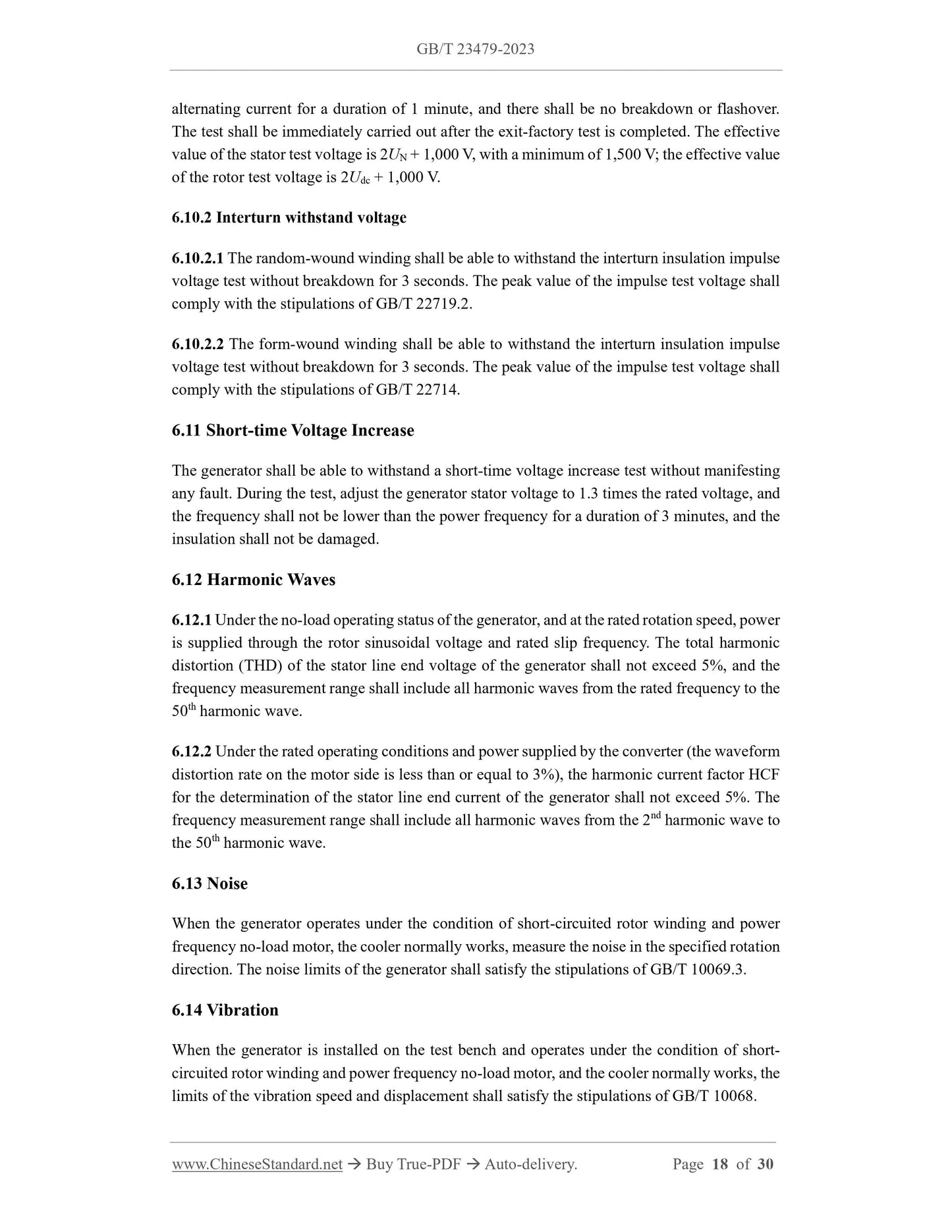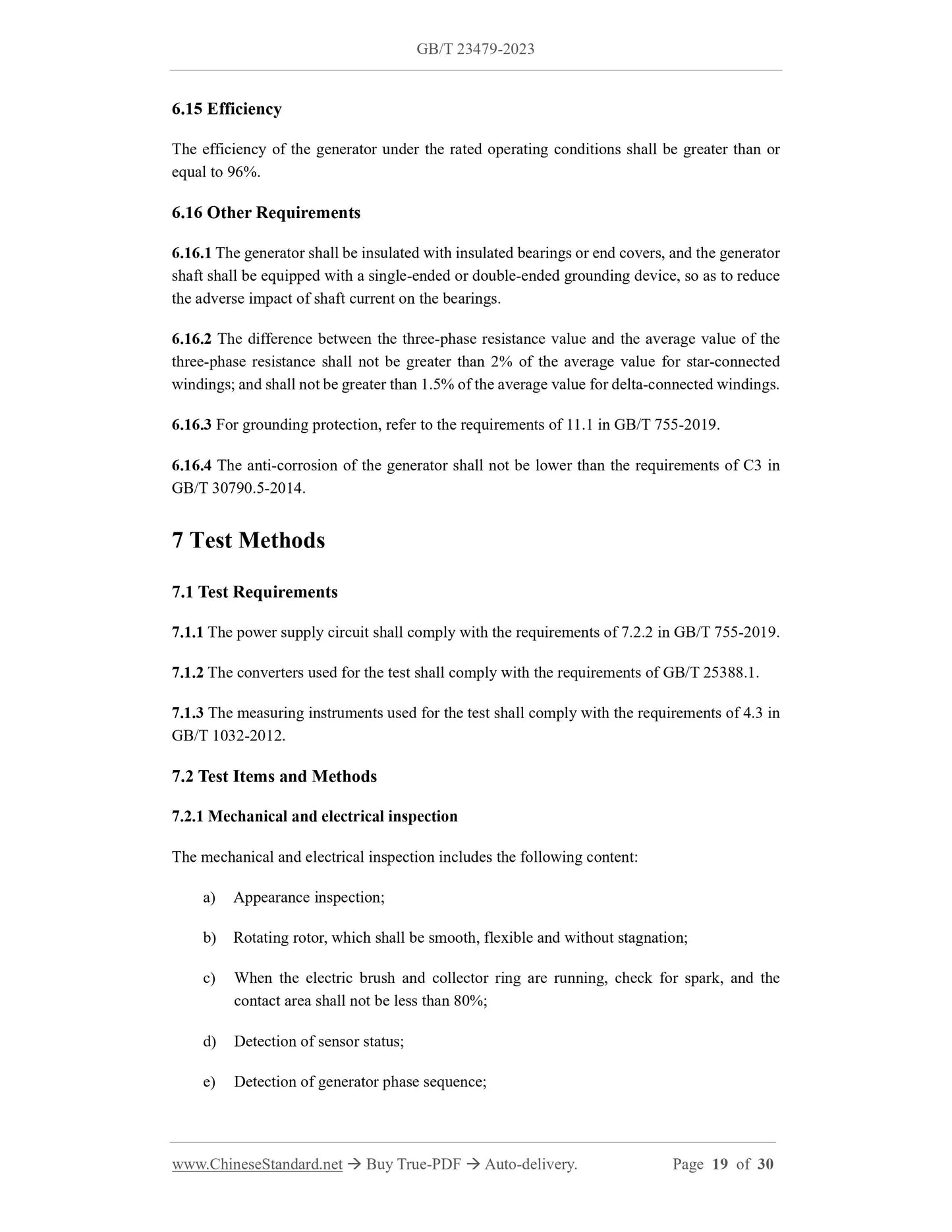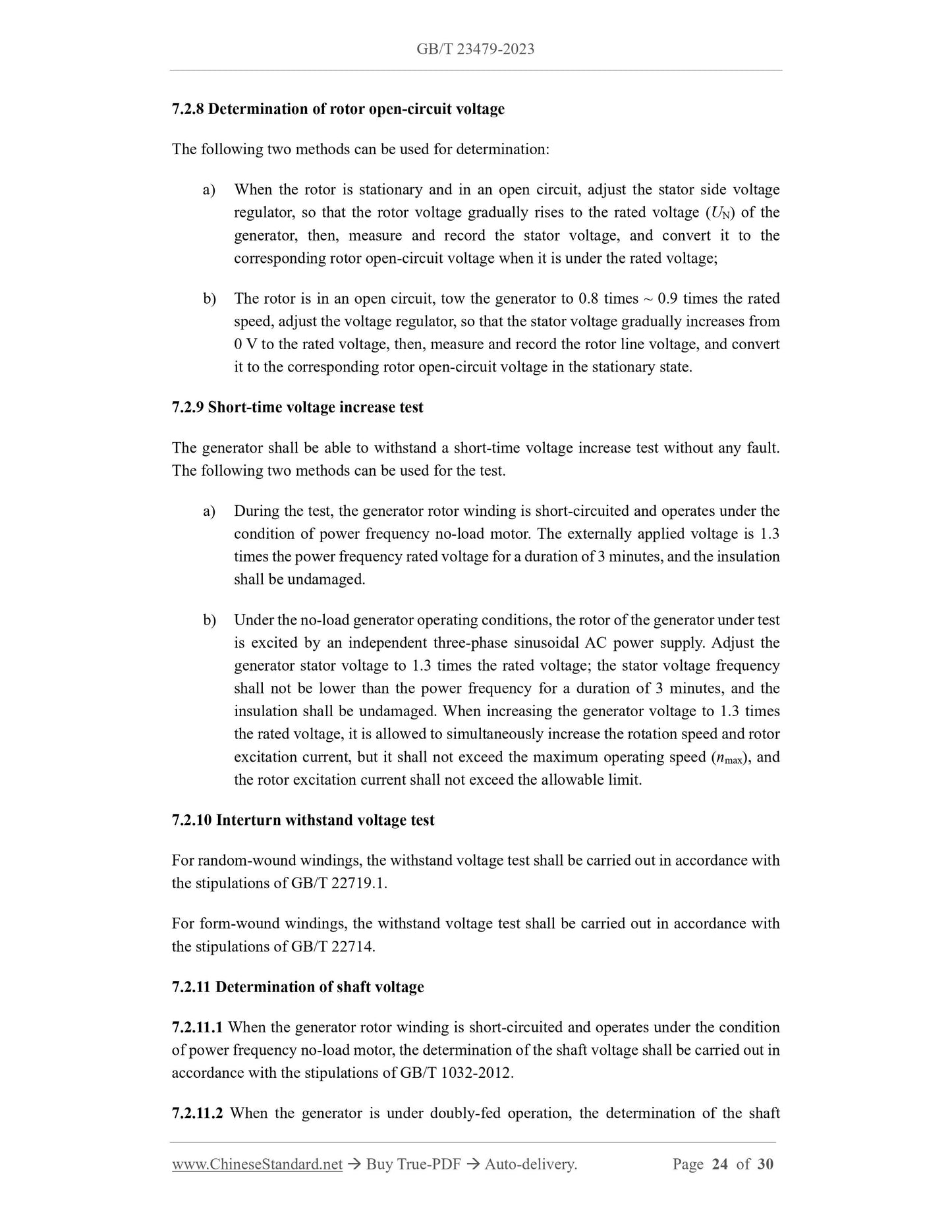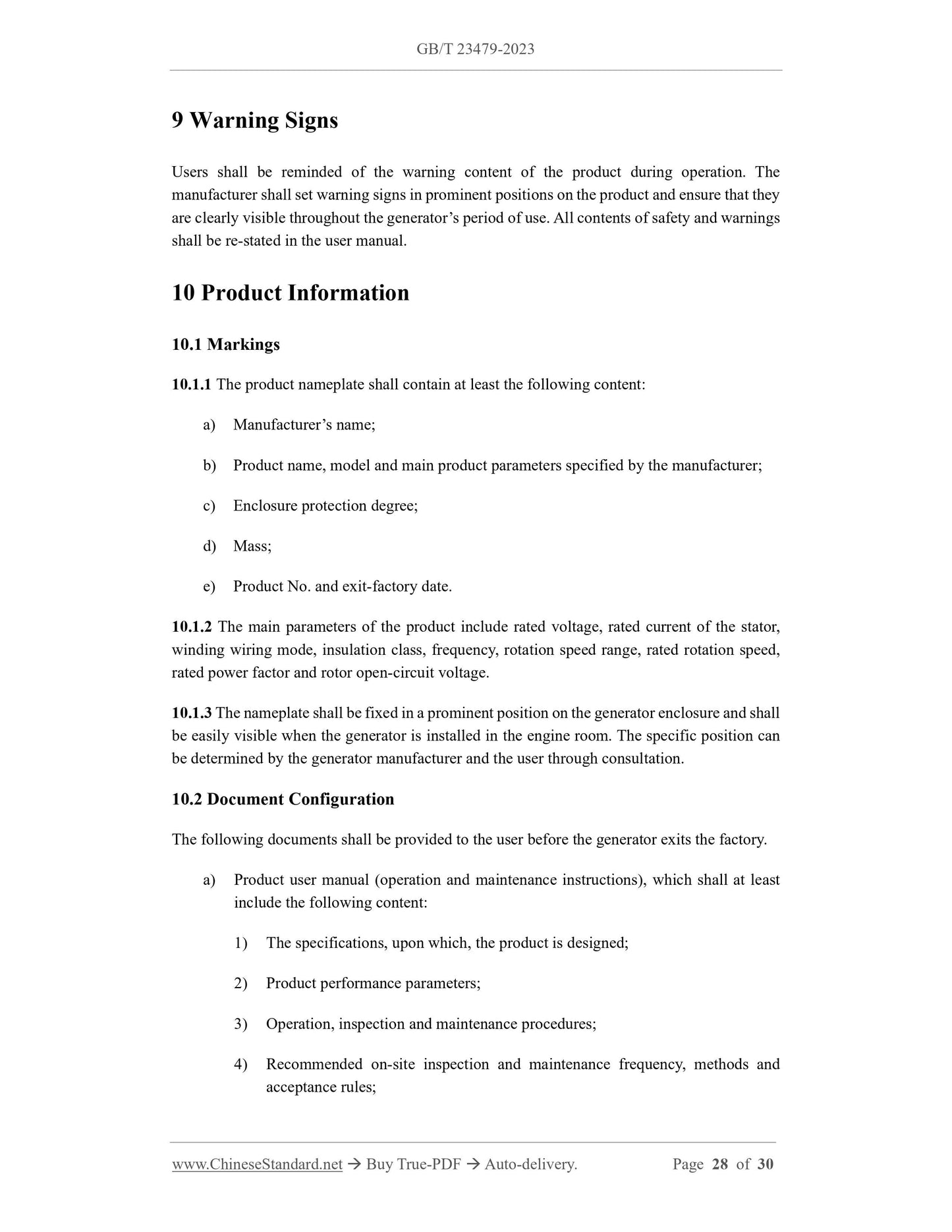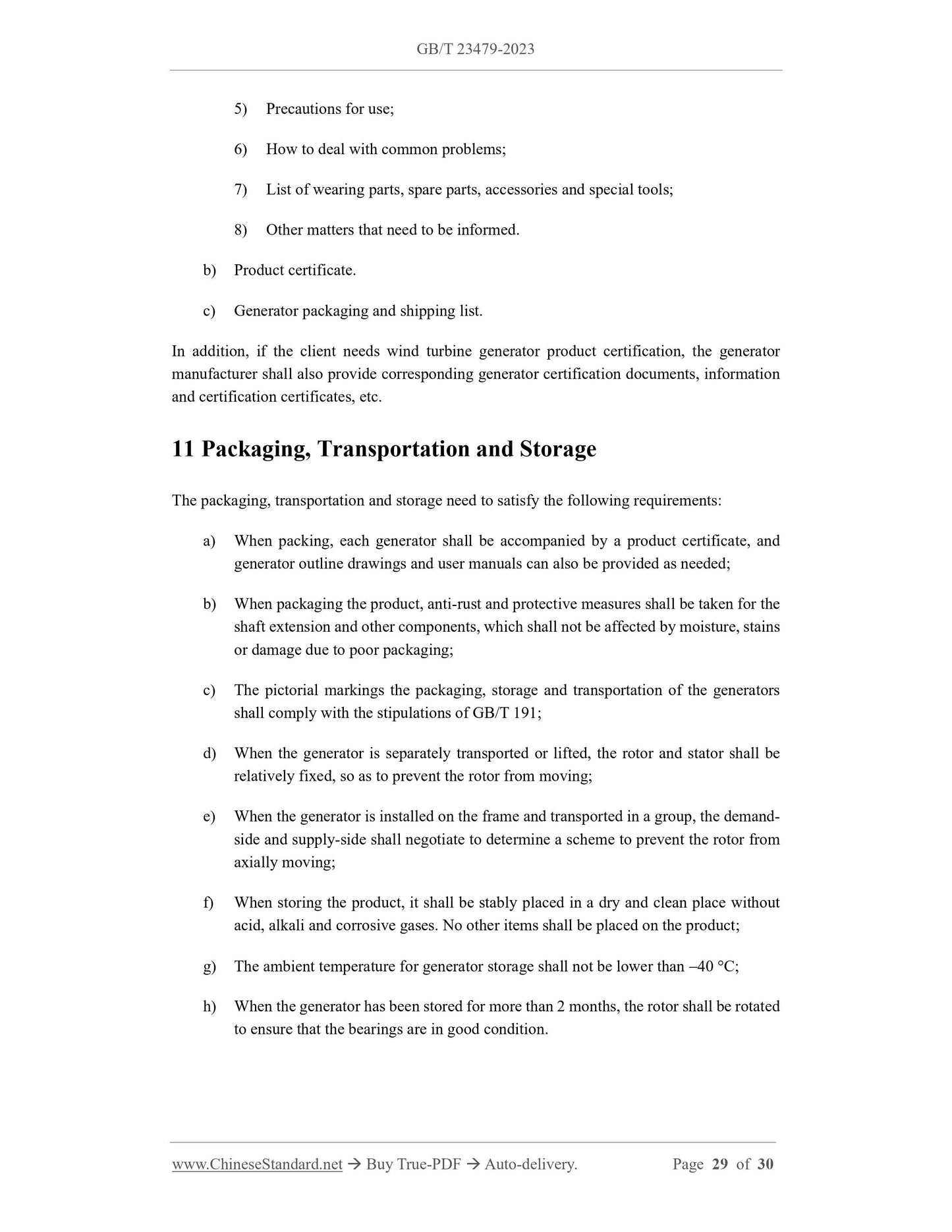1
/
of
12
www.ChineseStandard.us -- Field Test Asia Pte. Ltd.
GB/T 23479-2023 English PDF (GB/T23479-2023)
GB/T 23479-2023 English PDF (GB/T23479-2023)
Regular price
$320.00
Regular price
Sale price
$320.00
Unit price
/
per
Shipping calculated at checkout.
Couldn't load pickup availability
GB/T 23479-2023: Wind turbine - Doubly-fed induction generator
Delivery: 9 seconds. Download (and Email) true-PDF + Invoice.Get Quotation: Click GB/T 23479-2023 (Self-service in 1-minute)
Newer / historical versions: GB/T 23479-2023
Preview True-PDF
Scope
This document specifies the type, technical requirements, test methods, inspection rules,warning signs, product information, packaging, transportation and storage, environmental
protection and safety of low-voltage doubly-fed induction generator for grid-connected wind
turbines with a rated voltage of 1,140 V and below.
This document is applicable to low-voltage doubly-fed induction generator for grid-connected
wind turbines with a rated voltage of 1,140 V and below (hereinafter referred to as “the
generator”).
Basic Data
| Standard ID | GB/T 23479-2023 (GB/T23479-2023) |
| Description (Translated English) | Wind turbine - Doubly-fed induction generator |
| Sector / Industry | National Standard (Recommended) |
| Classification of Chinese Standard | F11 |
| Classification of International Standard | 27.180 |
| Word Count Estimation | 24,225 |
| Date of Issue | 2023-05-23 |
| Date of Implementation | 2023-12-01 |
| Older Standard (superseded by this standard) | GB/T 23479.1-2009,GB/T 23479.2-2009 |
| Issuing agency(ies) | State Administration for Market Regulation, China National Standardization Administration |
Share
